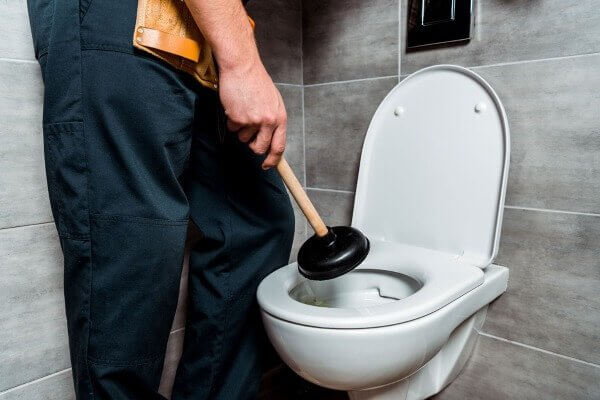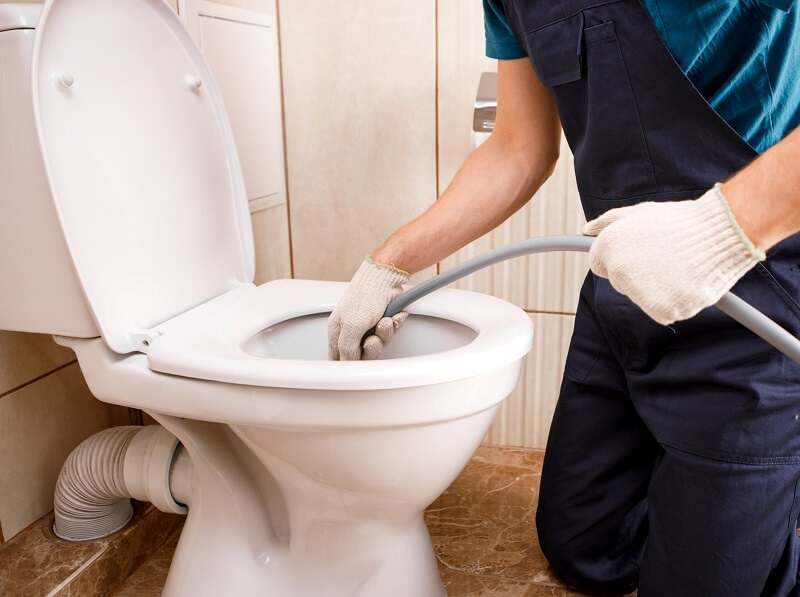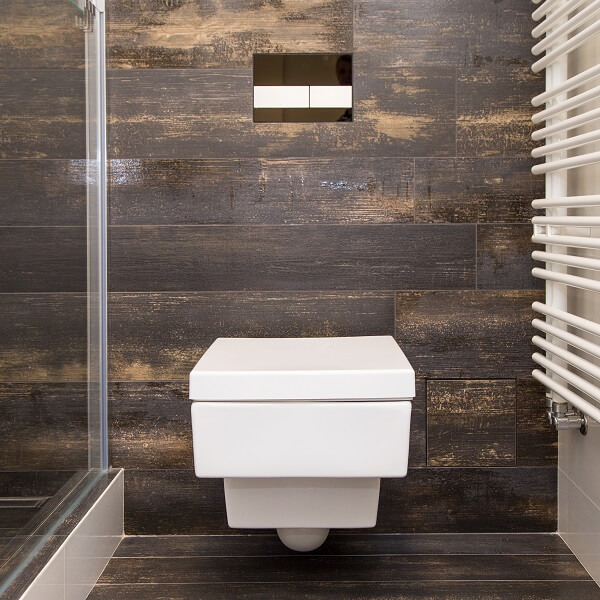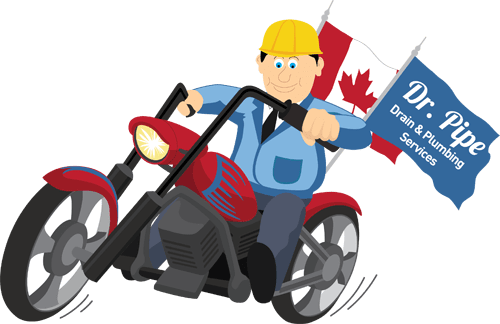
Give us a call today at 613 791 5777 for a free upfront estimate!
Blocked drains and sewer backups can be a source of immense frustration for residential or commercial customers and can cause a lot of damage if you do not act on them. Blockages, whether in your sink or in your shower drainage, do not just show up all of a sudden; usually there are some warning signs that need to be observed closely. That way, you can avoid long-term problems associated with needing Ottawa drain repair.
Seven Common Indicators of Blockages and Sewer Drain Clogs
- You note the overwhelming and rather undesirable sewage odor. You also note that the drains in the household are not working properly and have slowed considerably when you attempt to drain your sinks and tub.
- When you notice several of your in-home fixture are not working properly and are draining slowly or not at all. Alternatively, when you notice your toilet is running or leaking constantly. In fact, keeping a close eye on your toilet can be one of the first indications something is amiss since the fixture is connected to the sewer line directly. Your bathtub and sinks may start to slow when they drain or may not drain at all.
- Your in home fixtures start doing things that are not normal. For example, if you suddenly drain the bathtub and hear the toilet bubbling or vice versa, there is likely an issue with a clog in your sewer drain.
- A clog in the sewer line leads to trapped air. The air that is trapped with bubble up in the house, most likely in the toilet or tub. If you note bubbles when you attempt to drain a tub or you see the toilet water bubbling or rising water, there is likely a clog in the sewer drainpipe that needs to be cleared.
- If when you check a drain clean out you see a blockage you can instantly confirm a clog being caused from a backed up sewer when you see the water coming out of the drain.
- If you happen to flush the toilet and you suddenly note the back up of sewage in a driveway, patio, basement, or alternative low-lying drain, you have a clog.
- If you see soapy water come up from the toilet drain or bathtub when the washer is running, it is indicative of a clog.
All of the above issues are a hint that something is amiss with your sewage line and call for immediate investigation into the issue. It is imperative that you remedy an existing issue as soon as possible. Doing so can save you time, money, and extra inconvenience. When you use the washroom and then flush the toilet, the last thing you want is to see anything overflow onto the floor. It won’t be fun mopping up the water and cleaning up the mess. Backups can be as minor as a slow drain or as major as an overflowing toilet. It’s not something you can put on the backburner since what might start off as a small problem will soon become a major one. That’s why you must know these 4 signs of possible sewer backups.
4 Most Common Sewer Backup Problems
1. Clogged Up Drains
It’s not uncommon for a drain to get clogged up due to an accumulation of things like grease, hair, toilet paper, and other things. While such a problem can be stressful, it can usually be remedied by unclogging it with a plunger. You will, however, have a serious problem on your hands if there are multiple drains clogged simultaneously. This can be a sign that you have a major problem on your hands. You should take particular notice if the clogged drains are not ones you don’t use that often, such as mudroom sinks and guest bathroom showers.
2. Water Backs Up in Other Drains
If you use your plumbing and find that water backs up in other drains in your home, take note! This is a tell-tale sign that you have a serious sewer backup issue and that you’re on the verge of a plumbing disaster. Unless the issue is nipped in the bud, you could face costly repairs.
3. Bubbling
Have you ever heard a bubbling sound after flushing the toilet? Don’t ignore it if you do. When water tries to get past a clog in a drain, air can get trapped, and this can cause bubbling. Bubbling can occur when you flush a toilet or when water is going down a sink drain.
4. Toilet No Longer Flushes Properly
If you push the flusher handle and the toilet does not flush properly, you’ve got a problem. You’ve got an even bigger problem if plunging does not resolve the issue. This might be a sign of sewer problems that require a service call from a professional plumber.
Fast Cheap Remedies for a Clogged Drain
If you find yourself dealing with a clogged toilet, tub, shower, or sink, do not despair. Clogs are relatively easy to repair in many instances. There are a few things you can try before calling in the professionals to do it for you. With a few small measures, you can perhaps save yourself a bit of money by doing so. If the issue is the bathroom toilet, the drain might easily clog.
If the problem is the tub or shower, the drain might very well be clogged with soap residue or small leftover slivers of soap and hair. If the drain issue is in the kitchen, the most common causes for such a clog is soap grease, or other food matter being caught in the drain pipe. All of these issues are fixable. Check out some of these simple fix it tips to get started.
Solution #1: Plunger
Plungers can help you create the right level of pressure to clear a clog in the bathroom or kitchen. Of course, the most common place a person would use a plunger is in the bathroom toilet, but it can make a quick clog-clearing endeavor in your kitchen sink or bathtub too. If the plunger is going to work at all there has to be water in the sink or tub. Usually with a clog, having water is not an issue: If you are dealing with a toilet or small sink, you need to have the bowl or basin(s) half full with water.
If you are working on the tub, five inches of water should be sufficient. You have to take up the plunger and put it over the drain and force the plunger downer repeatedly for a period of about 60 seconds. If you see the water flow out of whatever you are plunging, you have succeeded in clearing the clog. If the clog only starts to drain a little bit, you will need to plunge the sink, tub, or toilet again to clear it of the clog. Once you finish with the plunger, clean it and sanitize it.
Solution #2: Trap Clean Out
If there is a clog at the kitchen or bathroom sink, one of the easiest methods for clearing it is to access the trap. Beneath the kitchen sink, you can see the trap instantly: It is the pipe that is U-Shaped that connects the drain to the rest of the drainpipe: This is a common location for undesirable clogs. You will require an empty pail to capture and water that might come out when you do remove the trap.
Slide the bucket under the trap before its removal. At the u bend in the pipe, there may be a clean out plug – check to see if this is true of your system. If you find a plug, unplug it and allow whatever is in the trap to drain out into the bucket. You can use a cut, reshaped wire hanger to make an effort in clearing existing clogs if you have no plunger.
Solution #3: Hit Up The Drain Auger
In the event that you have plunged the sink and you have found no trap underneath the sink, the next step is to make use of a snake. The snake is available at just about any department store and runs about $15 in terms of cost. First, remove the tub screen, sink stopper, or the hair trap. Once you have cleared the drain opening, insert the snake into whatever clogged drain you are working – the unit will move in a clockwise position when it is freeing the clog.
Once you reach the u-bend in the pipe, continue to push past it until you can go no further. When the snaking process works, you can feel the clog give way. Make no effort to break up whatever material is clogging the pipes. Just remove the snake unit slowly as you drag the clog out of your pipes. Continue this process until you clear the clog completely. Long snakes are available for clogs that run deeper into the pipes as well.
Solution #4: Use Boiling Hot Water
If something causing the clog is soluble, then that thing is readily susceptible to heat. Boil up a pot full of water and pour it down the drain. Please note, this is only recommended if you have pipes made of metal. Put just a few cups of the super hot water in the drain. It will help the grease, fats, and oils that might be clogging the drain to dissolve more readily.
Several Factors that Influence on Cost
The costs of potential repairs are hard to determine if you do not know the cause of a clog or if all traditional methods of clog repair fail. How much you must pay to fix any kind of clog is highly dependent on several different factors. A drain clog professional can help you assess the issue and give you a price quote.
Clog Severity
Let’s face it, some clogs are a real hassle to clear. A drain clog Ottawa plumbing pro will immediately tell you the longer and more difficult it is to remove a clog, the more the task will cost. The charge for a drain cleaning is based on hourly rates, so let’s hope that when you do get a clog, it is one that can be dealt with quickly.
How Many Clogs Do You Have?
More than one clog – that means more time dealing with the issue, and, well, it means more cost. A good indicator that there is more than one clog present in the system is if water pours onto the floor of the bathroom while you are doing a load of laundry. This might suggest a clog inside the main line. If you’ve got several drains to fix and a clogged main line, the repair price increases.
Parts Removal?
If you must have the toilet drained and unbolted from the floor, or if the plumber must go under the sink and start taking pipes apart, get ready to open your purse a wee bit wider. These measures are indicative of clogs that are far more difficult to deal with or get to with the basic means of clog repair.
Maintaining Drains
If you use baking soda and hot water flushes through the drain on a regular basis, it can help keep the drain free of debris and odours. It can also prevent repairs and keep your repair costs to a minimum. A bit of prevention can save hundreds in future repairs.

DIY or Professional Help
Whatever the reason behind a blocked drain, it is always a tempting situation to try to attempt doing it on your own. However, dealing with blocked drains on your own may not be the best approach in the long-term. Although you may be able to fix some of the minor blockages in your home using different techniques, recurring blockages may be the sign that there is something more serious that needs to be identified and fixed.
The use of drain opening chemicals may actually prove to cause more harm than good to the problem at hand. Although you may be able to open up a blocked drain using these harsh chemicals instantly, the kind of damage caused to your drainpipe by the caustic soda and other hard chemicals present in these drain openers can prove to be devastating in the long run. In addition to causing damage to your drainpipe, the caustic soda and other harsh chemicals present in a drain opener can also damage your wastewater treatment system, the environment, and the natural water supplies. A DIY attempt to fix a blocked drain may create more serious problems for you in the long run.
Instead of trying to fix a blocked drain yourself by using harsh chemicals on recurring blockages, it is always a better and safer option to call a professional plumber to take care of your drain and plumbing in Ottawa. By using the latest tools and equipment, such as CCTV cameras, drain snakes, air blowers, and other high-tech devices, the professionals at Dr. Pipe Drain and Plumbing Services are able to quickly identify potential issues with your drains and fix them efficiently.

What Else You Should Know About Sewer System
In all homes, there is a DWV, otherwise understood as a “Drain, Waste, and Vent System.” The home’s drainage system is created to pull waste sewage water from the home and to allow it to flow to the sewer system. The system is supposed to keep toxic waste water and nasty odors from getting into the house and it does so effectively when the system is working properly. There are homes outfitted with what is known as a “Gray Water System.” The latter system is one where there is a drain line for the laundry, dishwasher, showers, and sinks, and the toilets are outfitted with a drain line all their own. The “gray waters” are then used for toilet flushing or for the purposes of irrigation.
Most existing drain systems are gravity flow systems with a downhill grade for prevention of drain clogs and ease of water flow. These systems rely on gravity to pull the water downhill and so the DWV system is created with this principle in mind. Every drain moves toward a bigger “branch drain.” The waste stack connects to all the branch drains. The waste stack consists of a pipe that allows water to flow into the sewer line or main drain. This pipe is positioned vertically. A big drain pipe exits the home and is directed toward a built in septic system or the city sewer.
All the pipes go downhill whether they are flowing to the septic or the sewer. Sometimes, the line might be located beneath the city sewer level. Alternatively, you might have a bathroom located in the basement area of your home wherein this bathroom drain is lower than the chief sewer line. When this happens, you will require additional pump equipment to help rid the waste water and to move it to the septic or sewer.
Sewer Backup in Ottawa? Call Dr. Pipe Drain and Plumbing Services
When you experience sewer or drain problems, call plumber Ottawa – Dr. Pipe Drain and Plumbing Services right away. We use cutting-edge video diagnostics to get to the root of the problem. This means there’s no guesswork that wastes your time and costs you more money. You’ll also face minimal disruption since our trenchless sewer repair process will fix the issue but won’t damage your lawn.
Why Dr. Pipe Drain and Plumbing Services?
Many companies offer licensed plumbers, but Dr. Pipe Drain and Plumbing Services also offers respect for your home and your time as our standard. This means that from the time you call us, we are committed to making your entire experience as customer friendly as possible. We coordinate times that work with your schedule and call when we’re on our way. Our plumbers keep our areas neat and covered while working. In our projects, we use the most appropriate solutions to work quickly and efficiently.
Our strengths do not only lie in plumbing. We can also help you navigate the insurance companies and city red tape. You will receive all the necessary permits for our jobs. We will guide you through the City of Ottawa rebates for which you qualify.
Our customers love us, and our work is the best quality. Stop by our testimonials page, then give us a call to set up your free, no-obligation inspection.
Give us a call today: 613 791 5777 for a free upfront estimate!




